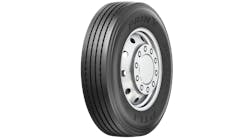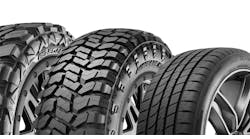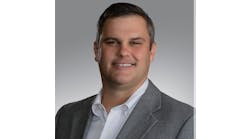Goodyear CEO and Chairman Rich Kramer had a blunt warning for attendees of the company’s North American Customer Conference in Grapevine, Texas. What he called “inflection points” will massively disrupt Goodyear and the tire industry at large, including the customers, markets, and industries they serve, and they are already disrupting the status quo.
That’s the case, he stated in his keynote speech on Jan. 29, 2019, even though the full consequences of their impact may not be readily evident for years to come.
He defined an inflection point as a permanent shift in behaviors that change the way people think and act. He then warned Goodyear employees and dealers of four key areas that are already creating disruption and change for the tire industry.
1. Changing automobile OEM business models.
2. Changes in attitudes as to what vehicles are and how they should be used by consumers.
3. Shifts in competition, including startups.
4. Changing consumer buying habits.
Looking at the automotive industry as a whole, Kramer noted, “Automobiles have fueled our economy for over 100 years. And now, they will no longer be produced. That is an inflection point.”
Kramer praised a book titled, “Only the Paranoid Survive” by Andrew Grove as heightening his understanding of inflection points in business. He noted the book taught him that “We don’t always recognize when an inflection point happens. We only recognize it in hindsight.”
As for new OEM initiatives like Ford’s Smart Mobility and GM’s Cruise Automation programs, Kramer said these are clear signs car companies are changing their business models. And that they would only make such a radical departure from long-established business models because “They see a profit opportunity in running fleets that is multiple times what they get selling one car at a time. Automobile companies are showing a willingness to shift their business models today to a new economic reality. That is an inflection point, and nothing will be the same after it passes.”
Turning to changing perceptions about vehicle use, Kramer said three main drivers are changing people’s attitudes toward mobility. “People want reliability, with access to on-demand transportation in under two minutes. They are also looking at the costs of personal transportation in a new way. Most cars sit idle 98% of the time, and cost $2 per mile to run. Many people today are questioning the wisdom of those costs when other forms of mobility are becoming increasingly available.”
He said the third driver that is changing attitudes about vehicle use is changing attitudes about the very utility of vehicles — a move away from “do-it-all” types of vehicles toward more highly specialized vehicles that excel in specific applications and are used as needed via some type of shared ownership and use platform.
And, after more than a century of dominance in the industries they serve, Kramer warned his audience that long-established “heritage” tire manufacturers are now vulnerable to a host of new competition, from overseas rivals to startups with sometimes outrageous ideas.
“These new startup companies,” Kramer cautioned, “sometimes all they have is an idea and a benign ignorance of what it takes to establish a tire company. But these startups focus on what is possible – not on what can’t be done. And on that front alone, they can be disruptive forces in their own right that cause great change. And we cannot afford to take them lightly.”
Changing consumer buying habits are also an inflection point that demands attention, Kramer told attendees. While he said the shift toward more online purchases is widely understood, he cautioned against thinking those shifts in buying habits will not affect Goodyear or its dealers. “The tire industry is not immune to broad changes in business models and consumer buying habit.”
However stark his warnings, Kramer stressed that Goodyear is well positioned to respond to the challenges inflection points present to the company now and in the near future. He urged his audience to begin thinking and acting now about coming changes.
“Adopt with balance,” he said. “And keep in mind that our business is strong and will be for a long time to come. Even the most advanced, futuristic vehicle imaginable today will still need tires. But we cannot afford to be complacent or think ourselves immune to change as we move into this new, disruptive future.” -- Jack Roberts, senior editor, Heavy Duty Trucking



